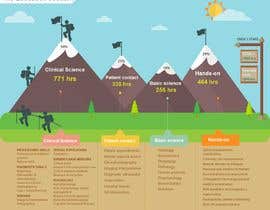Exploring The Mechanisms And Impacts Of Cold Laser Therapy: A Comprehensive Scientific Viewpoint
Exploring The Mechanisms And Impacts Of Cold Laser Therapy: A Comprehensive Scientific Viewpoint
Blog Article
Uploaded By-Dougherty Hutchison
You may have become aware of cold laser treatment as an encouraging therapy alternative for different problems, but have you ever before questioned how it actually deals with a mobile degree? Understanding the systems behind this therapy can clarify its performance in advertising recovery and lowering inflammation. By checking out the science behind cold laser therapy, you'll acquire understandings right into the interesting methods which light can affect mobile processes and help with tissue repair.
How Cold Laser Treatment Functions
To comprehend exactly how cold laser treatment functions, you require to comprehend the basic concepts of just how light power connects with biological cells. Cold laser treatment, additionally referred to as low-level laser treatment (LLLT), utilizes specific wavelengths of light to pass through the skin and target hidden tissues. Unlike the extreme lasers made use of in surgical procedures, cold lasers produce low degrees of light that don't create warm or cause damage to the tissues.
When these gentle light waves reach the cells, they're taken in by parts called chromophores, such as cytochrome c oxidase in mitochondria. https://longevity.technology/lifestyle/flexbeam-red-light-therapy-review-say-goodbye-to-pain/ of biological actions, consisting of boosted mobile energy manufacturing and the launch of nitric oxide, which boosts blood circulation and decreases swelling.
Furthermore, the light power can likewise boost the manufacturing of adenosine triphosphate (ATP), the power money of cells, aiding in mobile fixing and regeneration processes.
In laser for stop smoking , cold laser treatment utilizes the power of light energy to advertise recovery and minimize pain in a non-invasive and gentle fashion.
Systems of Action
Exactly how does cold laser therapy in fact function to create its restorative effects on biological tissues?
https://personalinjurychiropracti61505.bligblogging.com/30801185/harness-the-transformative-capacities-of-light-making-use-of-cold-laser-therapy-to-discover-the-future-of-discomfort-management-and-rehab , likewise called low-level laser treatment (LLLT), runs through a process known as photobiomodulation. When the cold laser is put on the skin, the light power penetrates the cells and is absorbed by chromophores within the cells.
These chromophores, such as cytochrome c oxidase in the mitochondria, are after that boosted by the light energy, resulting in a waterfall of biological reactions. One vital device of action is the enhancement of cellular metabolism.
The absorbed light energy enhances ATP production in the mitochondria, which is crucial for mobile function and repair work. Additionally, cold laser treatment aids to minimize inflammation by preventing inflammatory moderators and advertising the launch of anti-inflammatory cytokines.
This anti-inflammatory impact contributes to discomfort alleviation and tissue healing.
Healing Effects
Understanding the healing results of cold laser therapy entails recognizing how the boosted mobile metabolic process and anti-inflammatory residential or commercial properties contribute to its favorable results on organic tissues.
When the cold laser is related to the damaged location, it promotes the mitochondria within the cells, bring about increased production of adenosine triphosphate (ATP), which is vital for cellular feature and repair work. This boost in cellular energy increases the recovery procedure by advertising tissue regeneration and decreasing inflammation.
Additionally, the anti-inflammatory residential properties of cold laser therapy aid to decrease pain and swelling in the targeted area. By inhibiting inflammatory conciliators and advertising the launch of anti-inflammatory cytokines, cold laser treatment aids in easing pain and enhancing the overall healing feedback.
This decrease in swelling not only provides prompt alleviation yet also sustains lasting tissue fixing.
Conclusion
Finally, cold laser therapy functions by stimulating cellular repair service and tissue regrowth with photobiomodulation. Its anti-inflammatory homes supply pain alleviation and minimize swelling by hindering inflammatory moderators.
This therapy uses an extensive method to recovery, providing both immediate alleviation and long-lasting tissue repair work benefits.
Through its mechanisms of action, cold laser treatment shows to be an efficient and encouraging treatment choice for a variety of problems.
